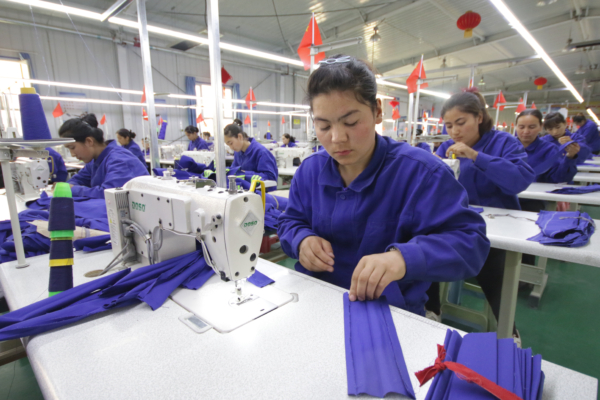China’s leading company in the sewing equipment industry, Xi’an Standard Industrial Co., Ltd. (referred to as “Standard Share”), recently released its 2024 loss performance report. This state-owned enterprise has seen a continuous net profit loss for four years, with a significant decline in its industrial sewing machine business. Additionally, another well-known sewing equipment company under state ownership, Shanggong Shenbei Group, is also deeply mired in losses.
According to the 2024 annual report of Standard Share, the company achieved operating income of 446 million yuan, a decrease of 11.9% year-on-year; the net profit attributable to the parent company was a loss of 153 million yuan, with a non-recurring net loss of 163 million yuan.
The reason for the losses given by Standard Share is as follows: in terms of operating income, it is mainly due to fierce market competition in the sewing equipment industry, leading to a decrease in the company’s sewing equipment sales revenue; in terms of net profit, it is mainly due to the provision of credit impairment and asset impairment reserves amounting to 107 million yuan in 2024.
Standard Share’s main business is divided into two major sectors: industrial sewing machines and parts manufacturing. This includes sewing machine manufacturing, metal surface treatment and heat treatment processing, metal cutting services, material handling equipment manufacturing, mechanical parts, and component processing.
Standard Share, formerly known as Shanghai Huigong Sewing Machine Factory founded in 1946, renamed Shaanxi Sewing Machine Factory after relocating to Shaanxi in 1968, established Xi’an Standard Industrial Co., Ltd. in 1999, and was listed on the Shanghai Stock Exchange in 2000. With over seventy years of history, it is the only state-owned holding listed company in the sewing equipment industry.
After reaching a peak of 1.246 billion yuan in operating income and 131 million yuan in net profit in 2007, the company’s performance began a downward trend. As of now, Standard Share has seen a continuous four-year net profit loss and thirteen consecutive years of negative non-recurring net profit.
The core business of Standard Share, the industrial sewing machine market demand, is weak, combined with intensified market competition, resulting in sustained pressure on performance. In recent years, the global textile and clothing industry demand has shrunk, coupled with rising labor costs in China, leading to overall sluggish growth in the sewing equipment industry. Despite Standard Share’s attempts to address challenges through technological upgrades and market expansion, the results have been limited, failing to reverse the decline.
Similarly, another Chinese sewing machine and intelligent manufacturing equipment manufacturer, Shanggong Shenbei Group Co., Ltd. (referred to as “Shanggong Shenbei”), also faces a bleak performance.
Financial reports show that Shanggong Shenbei’s non-recurring net profit has continued to decline from 2021 to 2023. According to performance forecasts, the company expects a net profit loss of 195 million to 250 million yuan and a non-recurring net profit loss of 235 million to 290 million yuan in 2024. Compared to the previous year, Shanggong Shenbei’s losses have further expanded, reflecting the company’s challenges in its core sewing equipment business.
The announcement points out that the main reasons for the exacerbated losses are declining market demand, fluctuating raw material costs, and uncertainties in the domestic and international economic environment. Furthermore, the company’s slow progress in transforming into intelligent manufacturing and high-end equipment fields has failed to effectively offset the decline in traditional business.
Shanggong Shenbei, headquartered in Shanghai, is a sewing machine and intelligent manufacturing equipment manufacturer. The company was once the first sewing machine factory in mainland China, a private enterprise that was later nationalized during the Chinese Communist Party’s “industrial and commercial reform” movement in 1954. Currently, the company’s two main shareholders are state-owned.
Industry analysts suggest that the Chinese sewing equipment industry is undergoing a period of structural adjustment pains. On one hand, the shifting of the global garment industry chain to low-cost areas like Southeast Asia has weakened the traditional advantages of Chinese enterprises. On the other hand, the high research and development investment and long cycle of intelligent sewing equipment and automated production lines make it difficult to generate new profit growth points in the short term. Even as industry leaders like Standard Share and Shanggong Shenbei struggle to escape losses, the survival pressures on other small and medium-sized enterprises are foreseeable.

